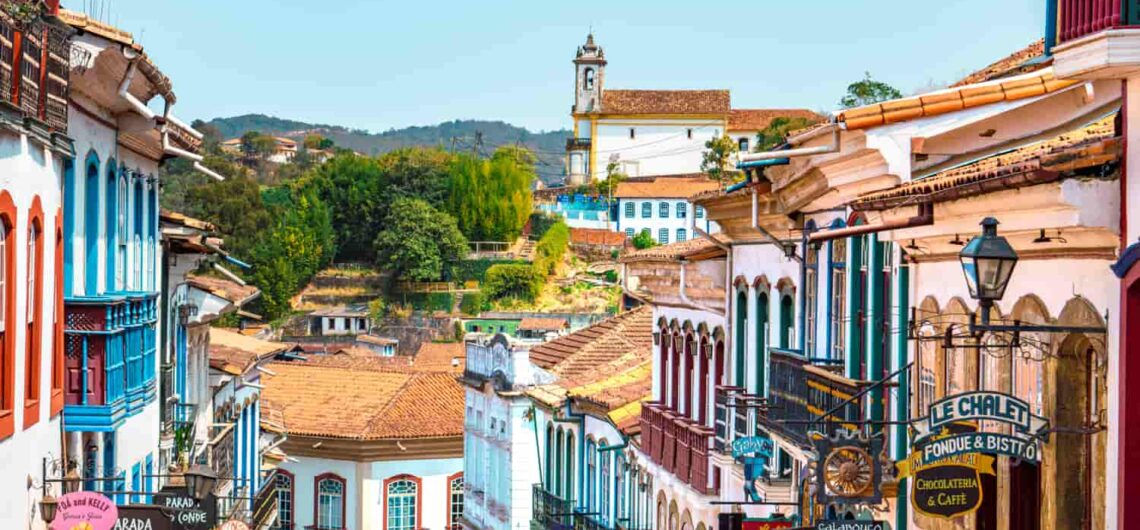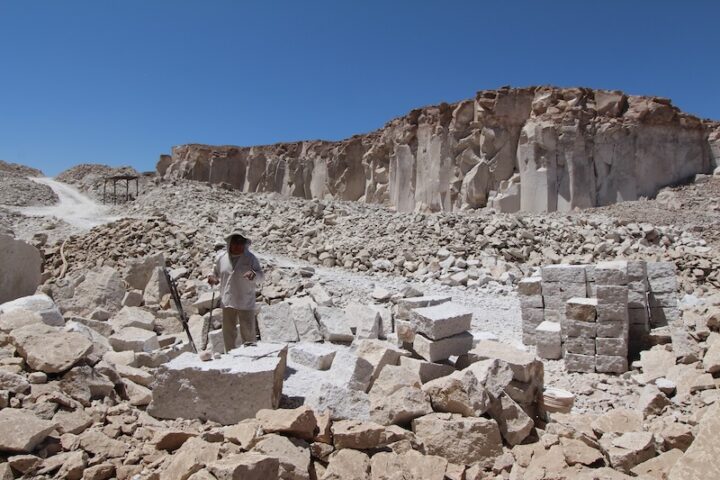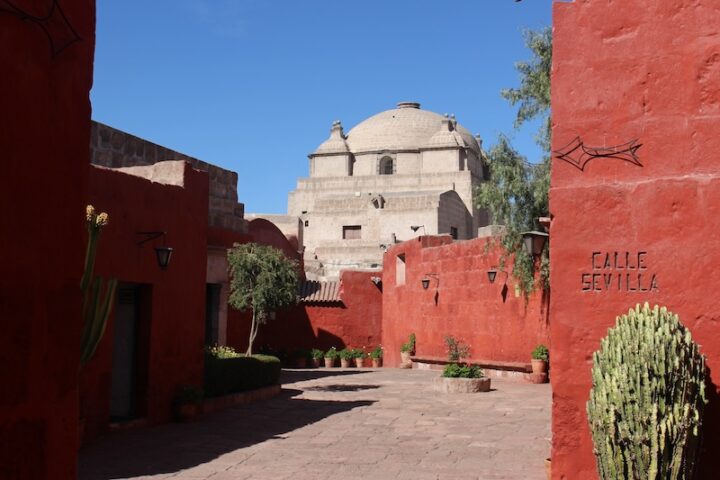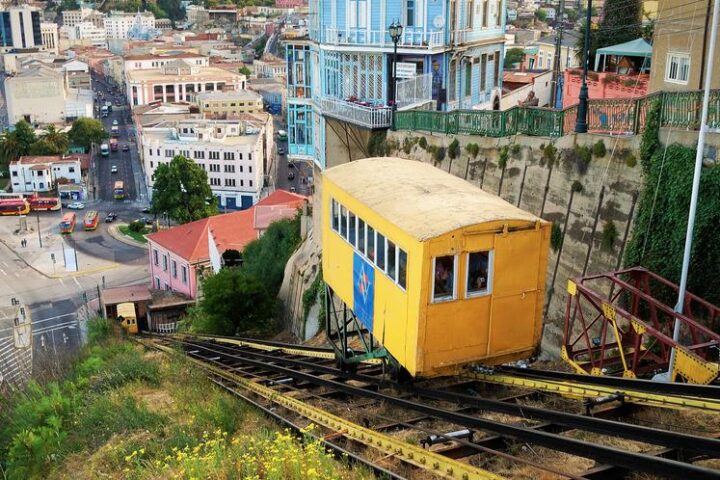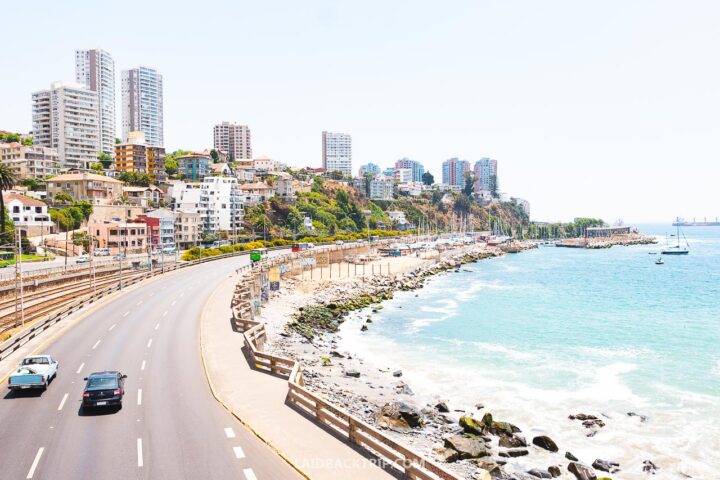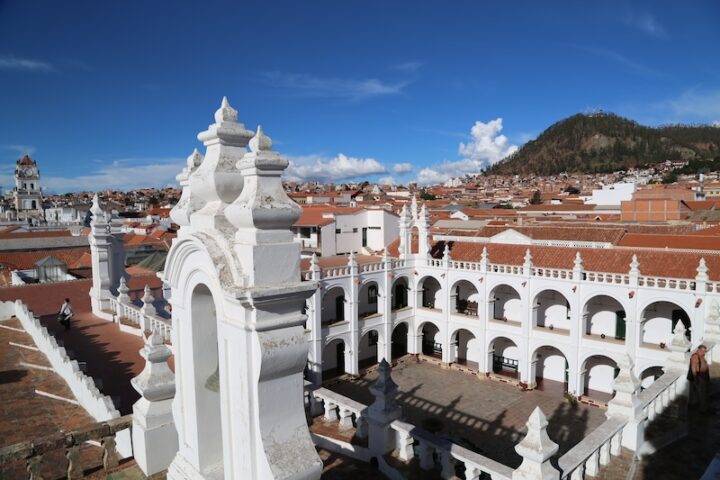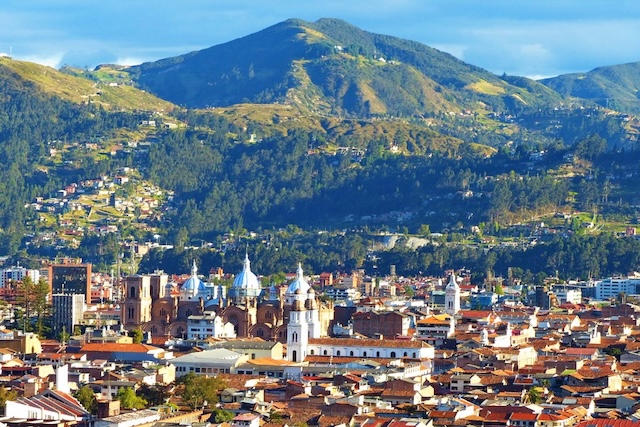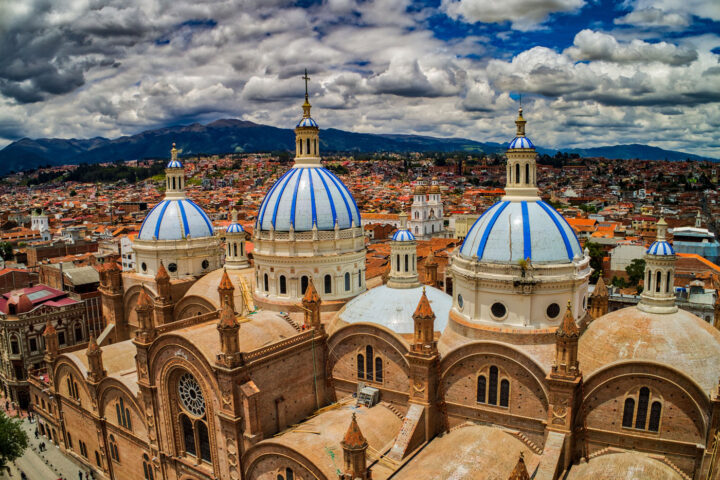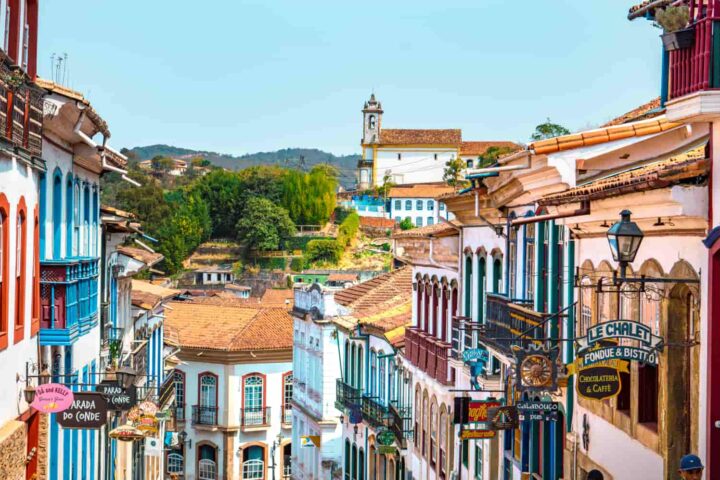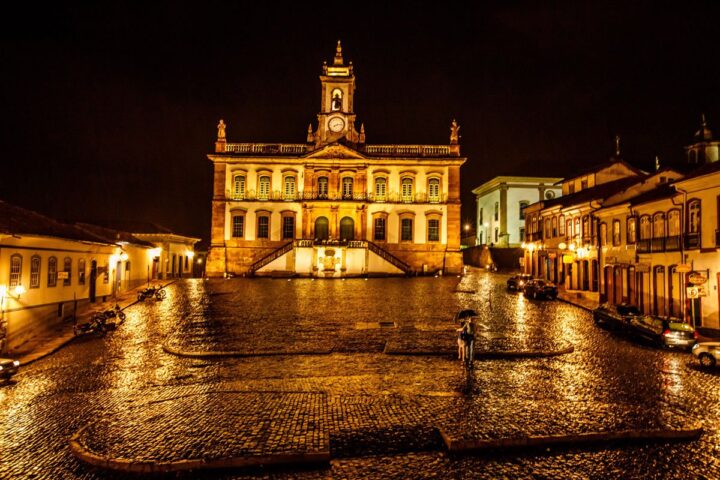Our region is scattered with magnificent cities. But it’s the UNESCO heritage sites in South America that hold some of the most fascinating secrets. Not only because of the deeply entrenched history of these places. Colonial architecture, baroque churches, and grand leafy plazas can indeed all be found here, but the beguiling beauty of South American UNESCO sites is found in their duality. The past exists in perfect harmony with the present. Whilst deep history is legible around almost every corner, so too is the life of the city’s more modern dwellers.
Take Valparaíso in Chile. Once one of the continent’s most important seaports – a place built on the promise of opportunity – it still retains its bohemian energy. A creative hub with more than 400 graffiti artists has turned Valparaiso into one of the world’s largest unofficial open-air museums of street art. And in Bolivia’s city of Sucre, its long-stretching heritage is complimented by a cosmopolitan feel thanks to the young crowd of intellectuals attending the university. Many historic buildings have been turned into high-end restaurants, bars, and art galleries which have helped to create a thriving culinary and cultural scene in one of South America’s lesser-visited UNESCO heritage sites.
It’s precisely this fusion that makes South America’s UNESCO heritage sites some of the continent’s most precious pockets to roam, led of course by one of our expert guides. Often locals themselves, our in-country partners handpick charismatic guides who know everything about the region they call home, from hidden cafes off-the-beaten-track to the most authentic markets, where local weavers sell their traditional wares.
Yet with the weighty status of a UNESCO heritage city comes crowds. The world’s leading stamp of history and heritage brings with it thousands of visitors eager to seek its secrets. But not here.
Undiscovered UNESCO Heritage Sites in South America
Together with our in-country partners, we have curated a list of UNESCO heritage sites in South America that are far from the obvious. Part of lesser-known, obscure towns that are not often found on the most popular tourist trails.
Which when woven into our bespoke South American itineraries, make for a true voyage of discovery. An authentic glimpse into the precious overlap of old and new. Let us introduce you to the beguiling beauty of lesser-known UNESCO sites in South America.
1. UNESCO Heritage Sites in Peru: The City of Arequipa
Nestled at the foot of El Misti volcano, Arequipa (2,335 m / 7,660 ft), or ‘The White City’ is Peru’s second-largest metropolis. Known for its iconic charming colonial architecture using chalk-white volcanic stone known as sillar, the city has been occupied by various peoples for millennia.
It’s the historic center though that earned UNESCO World Heritage status in 2000. Here more than 500 grand colonial-era houses transport visitors to the earliest beginnings of the fusion between European and Andean traditions, expressed in vaulted roofs and arches of white stone. And during our itinerary Travel with Taste: Peru’s Spellbinding South, our guests will hear the history of Arequipa from those who know it best.
Exploring the Santa Catalina Convent, a former religious center that has been converted into a Colonial Art Museum, Aracari clients can opt to be guided by the city’s most renowned Viceregal Art expert and an Aracari specialist. Aracari’s subject specialists aren’t simply guides, but rather leading researchers and professors, hugely influential people in their field of work.
Travel with Taste: Peru’s Spellbinding South also includes a visit to the Santa Catalina monastery, the pride of Arequipa. This expansive 29,426 square-meter convent was founded in 1580 and is a masterpiece of Colonial architectural design. An experience that is often followed by the Santuarios Andinos Museum, where the body of Juanita, a frozen girl, is on display. Uncovered atop Ampato Mountain in 1995, Juanita was a teenage girl sacrificed to the Inca gods in the 1400s and is eerily well-preserved.
But alongside all of that history, our guests are privy to the more modern Arequipa too: a fabulous foodie destination, and home to some of the country’s best restaurants and regional delicacies. The city itself is something of an anomaly, being halfway between the coast and the heights of the Andes. Typical dishes can be found in one of the city’s picanterias, which are buzzing with locals tucking into a plate of ají de lacayote (made using a local variety of squash) and adobo arequipeño (a juicy dish of pork, rocoto, chicha de jora and red onions).
2. UNESCO Heritage Sites in Chile: The City of Valparaíso
Found around two hours’ drive from the Chilean capital of Santiago lies the South America UNESCO World Heritage city Valparaíso, or Valpo – as it is affectionally known by locals. Brimming vibrancy and character, Valparaíso is a city arranged like an amphitheater – its steep hillsides dotted with brightly colored colonial buildings that slope down towards its historic port.
A warren of alleys propped precariously on the valley connects Valparaiso’s many neighborhoods with vertical stairwells transforming it into a labyrinth of ladders. Around half of the city’s original 31 elevators, built in the late 1800s to ease the strain of navigating near-vertical hills, still trundle up and down the slopes.
Once the first and most important merchant port on the sea routes that linked the Atlantic and Pacific oceans, the promise of prosperity and opportunity were building blocks for Valpo’s foundation. A port of call for commercial ships crossing the Atlantic and Pacific via the Strait of Magellan, it attracted thousands of immigrants in the late 1800s, until the construction of the Panama Canal in 1914 sent traders a more convenient route. After that, development slowed, allowing its harbor and distinctive urban fabric to survive as an exceptional testimony to early globalization.
Because of its history, the UNESCO World Heritage site of Valparaíso has been populated and influenced by people from all over the world. Abandoned mansions and brightly colored houses still cover Valpo’s 45 hills. Towards the port, palm trees gifted from Brazil, an archway built by the British and what was Latin America’s first stock exchange all stand as vestiges of a time when money flowed as easily as the spray paint does today.
Although defined by its past, this unconventional city still thrives as a bohemian hub of creativity. More than 400 graffiti artists have turned Valparaiso into one of the world’s largest unofficial open-air museums of street art, where the authorities now accept graffiti as part of the city’s culture and appeal.
But how do our trusted Chilean partners recommend spending time here? The hills of Cerro Concepcion and Cerro Alegre are recognized as UNESCO World Heritage sites and are a wonderful way to spend a morning with many promenades and great views of the bay below. Enjoy lunch and a local wine here – indeed some of the country’s best vineyards surround the city – before opting for an afternoon visiting the home of influential Chilean Gonzalo Ilabaca and heading down to the port for a hands-on graffiti workshop.
3. UNESCO Heritage Sites in Bolivia: The Town of Sucre
Wedged into a highland valley just east of the altiplano – the Andean plateau stretching across western Bolivia – the city of Sucre is one of the continent’s most beautiful UNESCO sites in South America. Set at a comfortable altitude of 2,810m, it was established in the mid-1500s by Spanish conquistadors on the lands of the indigenous Yampara people.
Spanish royalty and wealthy families involved with the silver mining in the nearby town of Potosí lived once called Sucre home, explaining why today, the city is awash with a treasure trove of well-preserved 16th- to 19th-century architecture laid out on an orderly grid system. The expansive Plaza 25 de Mayo lies in the center, surrounded by the cathedral that started in 1552 but remodeled many times since. Its ‘barroco mestizo’ exterior is contrasted with the neoclassical interior of the building. There’s also a Neoclassical town hall and an elegant former presidential palace to be explored around the plaza. This heritage is taken seriously too: historic buildings must be whitewashed each year – a uniformity of color that has given rise to the nickname, the “Ciudad Blanca” (White City) – and modern constructions are strictly limited to the outskirts of the city.
During our itinerary Bolivia: Salt Flats and Silver Aracari clients explore Sucre with our expert guide, taking in La Recoleta, Museum Asur, and the San Felipe Nery Church. But as ever, our bespoke vacations venture beyond the obvious. Just outside of UNESCO city, lies Tarabuco Market and Hacienda Candelaria, two of our most recommended experiences during a luxury vacation to Bolivia.
Tarabuco is well-known for its bustling market on Sundays where traditional artisans and weavers arrive early and set up stands to sell and uniquely, barter, their colorful crafts and produce until mid-afternoon. It’s an authentic glimpse into indigenous life in Bolivia and one accompanied perfectly by an afternoon spent in the town of Candelaria, also known for producing quality woven textiles. Along with our trusted Sucre guide, our clients will explore a 17th-century colonial Hacienda Candelaria before sitting down to a typical Bolivia countryside lunch. There’s the option to participate in a textile workshop too; learning to spin and dye the wool as well as trying their hand at the intricate weaving process.
Yet as with all the best towns and cities in South America, it’s not only the rich history and tradition that makes Sucre a destination deserving feature in our guide to the lesser-visited UNESCO sites in South America. Sucre’s long-stretching heritage is complimented by its cosmopolitan feel thanks to the young crowd of intellectuals attending the university. Many historic buildings have been turned into restaurants, bars, and art galleries which have helped to create a thriving culinary and cultural scene in one of South America’s most beautiful UNESCO Heritage sites.
4. UNESCO Heritage Sites in Ecuador: The Town of Cuenca
Cuenca, Ecuador, is another UNESCO heritage site in South America that seamlessly weaves together the past and the present. It is lesser known than the country’s capital of Quito – also a UNESCO site in South America – and is found cradled in a valley formed by the Andean peaks, perched at an elevation of approximately 2,500 meters (8,200 feet) above sea level. The Tomebamba River winds its way through Cuenca, bringing with it tranquil riverbanks and picturesque stone bridges that provide walkways from one neighborhood to the next.
But it’s the historic center that has anointed Cuenca with UNESCO World Heritage status. Here a captivating tapestry of cobblestone streets, centuries-old churches, and charming plazas harken back to the country’s colonial era. At its heart stands the magnificent Catedral de la Inmaculada Concepción, one of the continent’s largest cathedrals adorned with intricate stone carvings and a towering, blue-domed facade. Inside, the religious landmark is just as impressive and there’s the option to climb the seemingly endless staircases up to the tower for a spectacular view over the city.
Surrounding the cathedral, the streets spill with colonial-era buildings with wrought-iron balconies and red-tiled roofs, which today house art galleries, boutiques, and cosmopolitan bars and cafes. Our trusted Ecuador partners recommend a visit to one of the many markets found here too, such as the bustling Mercado 10 de Agosto, where locals and visitors alike gather to sample traditional Ecuadorian cuisine and peruse handicrafts. Indeed, one of those native crafts is, despite its confusing name, the Panama Hat. An original export of Ecuador, these straw hats woven from palm trees’ fibers date back to the 16th century.
Yet, amidst this rich history, this UNESCO World Heritage site is a city that is also vibrant and forward-thinking. It boasts a burgeoning art scene and culinary culture, and a peaceful, small-town atmosphere. Indeed, Cuenca is one of the few remaining cities where modern transport zips through the city, with passengers still donning their beautiful traditional indigenous clothing.
5. UNESCO Heritage Sites in Brazil: The Town of Ouro Preto
Tucked away in the Brazilian state of Minas Gerais, less than two hours drive from the skyscrapers of Belo Horizonte, lies Ouro Preto; a charming hub of cobbled streets teeming with Baroque architecture, ornate churches, grand squares, fountains, and bridges. A South American UNESCO World Heritage site, this 17th-century town rises like a mirage out of the rolling Serra do Espinhaço mountains, a fascinating relic of the Brazilian gold rush. After the Portuguese colonizers discovered gold here, Ouro Preto soon became one of the country’s wealthiest and largest towns. Its rich history is marked by events such as slavery, the Gold Rush, an attempted revolution, and the birth of Aleijadinho, one of Ouro Preto’s – and indeed, Brazil’s – greatest sculptors and artists.
For Aracari’s trusted Brazilian partners, whom we endlessly consult when curating a bespoke South American vacation – a visit to the Mina do Jeje is unmissable to glean the complex history of the region. Mina do Jeje, is a place of historical and cultural significance that sheds light on the complex history of mining and African influence in the region.
This particular mine holds a unique place in the story of Ouro Preto as it was worked predominantly by enslaved Africans during the colonial era. Mina do Jeje is renowned for its connection to the Jeje people, who were brought to Brazil as part of the transatlantic slave trade and contributed to the development of Afro-Brazilian culture in the region. Visiting this site is a poignant opportunity to learn about the hardships endured by those who toiled in the mines and the rich cultural heritage that emerged from their resilience. It serves as a powerful reminder of the intertwined histories of mining, slavery, and the African diaspora in Brazil, making it a place of both historical importance and cultural reverence.
Away from this deep history, this South American UNESCO Heritage Site is humming with a new energy too. While Rio de Janeiro and Salvador are globally known for carnivals, everyone in Brazil knows Ouro Preto also has an unforgettable carnival. With the town’s large university student population, Ouro Preto’s event promises all-day street parties and late-night live shows.
There is also a buzzing restaurant scene dishing up traditional Brazilian staples like feijoada (a hearty black bean stew with various meats) and pão de queijo (cheese bread), often served in charming local eateries. Those who visit with Aracari will also be privy to colonial-era sweets and desserts, such as the famous “doce de leite” (milk sweet) and “quindim” (a sweet custard), which have been passed down through generations. The city’s dining establishments, set in charming colonial buildings, offer a warm and inviting atmosphere to enjoy both traditional and contemporary Brazilian cuisine, making Ouro Preto a destination where history and gastronomy blend seamlessly.
Experience the Treasures of UNESCO Heritage Sites in South America with Aracari
Of course, each of the places listed here is made an even more unforgettable experience by being part of a luxury vacation with Aracari, designed by our award-winning travel team.
After almost three decades in the business, and 14 Conde Nast Travel Specialist Awards later, we pride ourselves in connecting our clients to experiences that go beyond the standardized tourist trail. So, book an appointment with our team today and set your sights on a voyage into the past and present, whatever your travel tastes.

